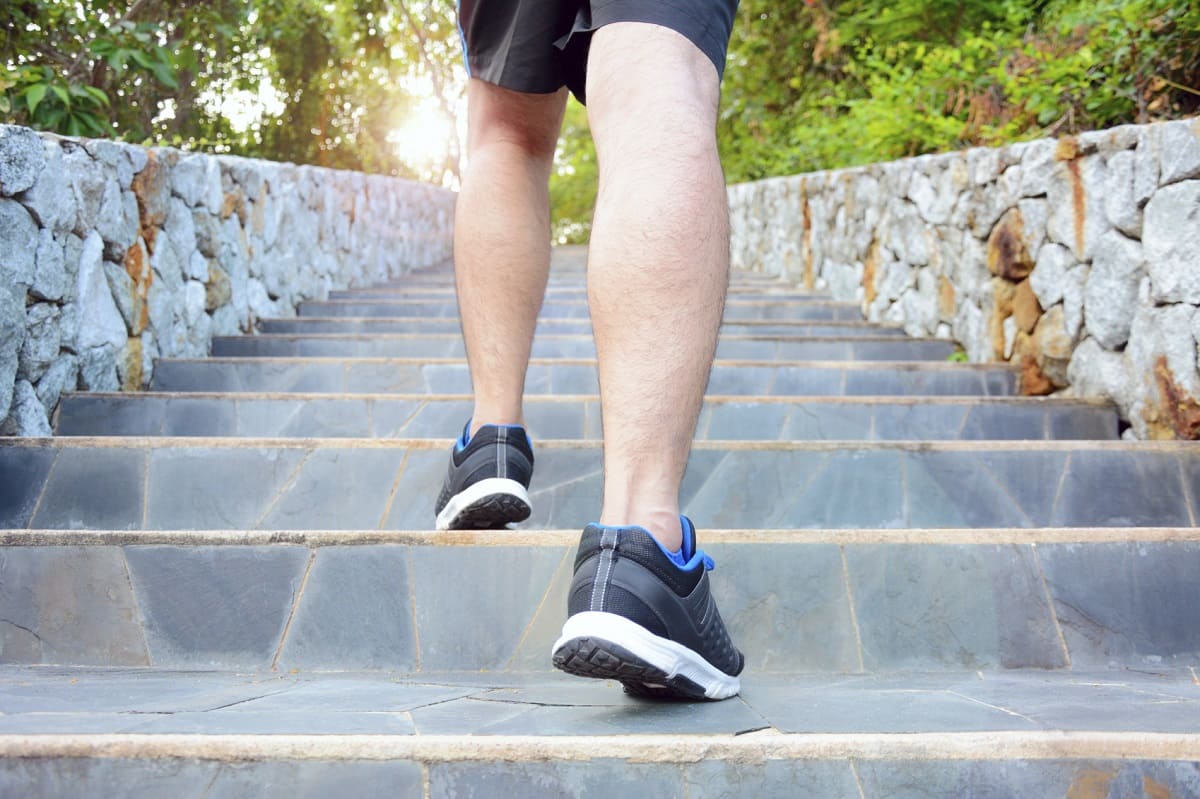

Articles
Leg Pain When Going Up Stairs
Modified: December 7, 2023
Get articles on how to alleviate leg pain when going up stairs. Find tips and remedies to make climbing stairs easier and pain-free.
(Many of the links in this article redirect to a specific reviewed product. Your purchase of these products through affiliate links helps to generate commission for Storables.com, at no extra cost. Learn more)
Introduction
Leg pain when going up stairs can be a frustrating and debilitating condition that affects many individuals. Whether it is a sharp, shooting pain or a dull, aching sensation, this discomfort can make simple tasks like climbing stairs challenging and uncomfortable. Understanding the causes of leg pain when going up stairs is crucial in order to find appropriate treatment options and relieve the symptoms.
There are various factors that can contribute to leg pain when ascending stairs. In some cases, it may be related to an overuse injury or muscle strain, while in other instances, it could be a symptom of an underlying medical condition. Identifying the root cause of the pain is essential in order to develop an effective treatment plan.
This article will delve into the different causes of leg pain when going up stairs, common medical conditions related to leg pain, and potential treatment options. It is important to note that while this article provides valuable information, it is not a substitute for medical advice. Consulting with a healthcare professional is essential for an accurate diagnosis and personalized treatment plan.
Key Takeaways:
- Leg pain when going up stairs can be caused by a variety of factors, including overuse, arthritis, nerve compression, and vascular conditions. Seeking medical attention for accurate diagnosis and personalized treatment is crucial for finding relief.
- Preventing leg pain involves maintaining a healthy weight, staying active, practicing proper body mechanics, and managing underlying medical conditions. Seeking medical attention for severe, persistent, or concerning symptoms is essential for accurate diagnosis and specialized care.
Read more: Hip Pain When Going Up Stairs
Causes of Leg Pain When Going Up Stairs
Leg pain when going up stairs can have various causes, ranging from musculoskeletal issues to neurological or vascular conditions. Understanding these underlying causes is crucial in order to determine the most appropriate treatment plan. Here are some common causes of leg pain when ascending stairs:
- Overuse or Muscle Strain: One of the most common causes of leg pain when going up stairs is overuse or muscle strain. This occurs when the muscles in the legs are subjected to excessive stress or repetitive movements, leading to inflammation and discomfort. Examples of activities that can contribute to overuse or muscle strain include running, jumping, or participating in high-impact sports.
- Arthritis: Arthritis is a condition characterized by inflammation and stiffness in the joints. When arthritis affects the knees or ankles, it can cause pain and difficulty when climbing stairs. Osteoarthritis, rheumatoid arthritis, and gout are common types of arthritis that can contribute to leg pain when ascending stairs.
- Tendonitis: Tendonitis refers to the inflammation of tendons, which are the thick cords that connect muscles to bones. When tendons in the legs become inflamed, it can result in pain, tenderness, and difficulty with movements such as climbing stairs. Tendonitis can be caused by overuse, repetitive motions, or sudden injury.
- Nerve Compression: Leg pain when going up stairs can also be caused by nerve compression or irritation. Conditions such as lumbar spinal stenosis, herniated discs, or sciatica can lead to leg pain, especially when pressure is exerted on the nerves while climbing stairs.
- Peripheral Arterial Disease (PAD): PAD is a condition that occurs when there is a buildup of plaque in the arteries, resulting in narrowed or blocked blood flow. When the legs do not receive adequate blood supply, it can lead to pain, cramping, and fatigue, particularly when exerting effort such as climbing stairs.
- Deep Vein Thrombosis (DVT): DVT is a blood clot that forms within a deep vein, usually in the leg. This condition can cause pain, swelling, and tenderness in the affected leg. When climbing stairs, individuals with DVT may experience increased discomfort due to the added strain on the leg muscles.
These are just a few of the many potential causes of leg pain when going up stairs. It is important to consider personal medical history, lifestyle factors, and any accompanying symptoms when seeking a diagnosis from a healthcare professional. By identifying the underlying cause, appropriate treatment measures can be implemented to alleviate the leg pain and improve overall quality of life.
Common Medical Conditions Related to Leg Pain
Leg pain when going up stairs can be associated with various medical conditions. In addition to musculoskeletal causes, there are several underlying health issues that can contribute to leg pain. Here are some common medical conditions related to leg pain:
- Peripheral Neuropathy: Peripheral neuropathy is a condition characterized by damage to the peripheral nerves, resulting in pain, numbness, and weakness in the legs. This condition can make climbing stairs challenging and uncomfortable, as it affects the nerves responsible for sensation and movement.
- Fibromyalgia: Fibromyalgia is a chronic pain disorder that is often accompanied by widespread pain, fatigue, and tenderness. Individuals with fibromyalgia may experience increased leg pain when engaging in physical activities such as climbing stairs. This condition is frequently associated with muscle and joint pain.
- Varicose Veins: Varicose veins are swollen and twisted veins that often occur in the legs. They can cause pain, discomfort, and a heavy sensation in the affected area. Climbing stairs can exacerbate the symptoms of varicose veins, leading to increased leg pain.
- Osteoporosis: Osteoporosis is a condition characterized by low bone density and fragile bones. When the bones in the legs are weakened due to osteoporosis, it can result in increased susceptibility to fractures and leg pain. Climbing stairs can put additional stress on the bones, causing discomfort for individuals with osteoporosis.
- Peripheral Artery Disease (PAD): PAD, as mentioned before, is a condition that affects blood flow in the legs. It can lead to leg pain, cramping, and fatigue when walking or climbing stairs. The restricted blood flow can cause decreased oxygen supply to the muscles, resulting in leg pain and difficulty with physical activities.
- Rheumatoid Arthritis: Rheumatoid arthritis is an autoimmune disease that causes inflammation in the joints. It commonly affects the hands and feet, including the knees and ankles, leading to pain and stiffness. Climbing stairs can aggravate the joints affected by rheumatoid arthritis and result in increased leg pain.
These are just a few examples of the medical conditions that can be related to leg pain when going up stairs. It is important to consult with a healthcare professional for an accurate diagnosis and appropriate treatment plan. By effectively managing these underlying conditions, individuals can alleviate leg pain and improve their overall quality of life.
Musculoskeletal Causes
When experiencing leg pain when going up stairs, musculoskeletal causes are often to blame. These causes are related to the muscles, bones, and joints in the legs. Here are some common musculoskeletal causes of leg pain when ascending stairs:
- Muscle Strain: Straining the muscles in the legs can result in pain and discomfort, especially when climbing stairs. Overuse or sudden movements can lead to muscle strain, causing inflammation and soreness. It is important to properly warm up before physical activity and to engage in stretching exercises to prevent muscle strain.
- Tendonitis: Tendonitis is the inflammation of tendons, which are the connective tissues that attach muscles to bones. When tendons in the legs become inflamed, it can cause pain and difficulty when climbing stairs. Tendonitis is often caused by overuse or repetitive motion, and it is important to rest and properly treat the affected area to allow for healing.
- Shin Splints: Shin splints are a common condition characterized by pain along the shinbone (tibia). It can occur when the muscles and tendons around the shinbone become inflamed or overworked. The repetitive impact of climbing stairs can exacerbate shin splints, leading to increased leg pain. Proper footwear, stretching, and gradual increase in activity can help prevent shin splints.
- Knee or Ankle Sprain: Spraining the knees or ankles can also result in leg pain when going up stairs. Ligaments, which are the bands of tissue that connect bones, can be stretched or torn when the joint is forced into an unnatural position. This can cause pain, swelling, and difficulty with movements such as climbing stairs.
- Osteoarthritis: Osteoarthritis is a degenerative joint disease that commonly affects the knees. The gradual breakdown of cartilage in the joint can lead to pain, stiffness, and difficulty with movements such as climbing stairs. Osteoarthritis is often associated with aging, previous joint injuries, or excessive weight-bearing activities.
- Fractures: Fractures or broken bones in the legs can cause severe pain, swelling, and difficulties with weight-bearing activities like climbing stairs. Fractures can be caused by trauma, falls, or accidents, and immediate medical attention is required in these cases to assess and treat the injury.
These musculoskeletal causes of leg pain when going up stairs highlight the importance of maintaining proper form during physical activities, wearing appropriate footwear, and taking steps to prevent overuse injuries. Seeking medical attention and following a comprehensive treatment plan, including rest, physical therapy, and pain management, can help individuals recover and regain their mobility.
Neurological Causes
In some cases, leg pain when going up stairs can be attributed to neurological causes. These causes involve the nerves that transmit signals between the legs and the brain. Here are some common neurological causes of leg pain when ascending stairs:
- Lumbar Spinal Stenosis: Lumbar spinal stenosis is a condition characterized by the narrowing of the spinal canal in the lower back. This narrowing puts pressure on the nerves that travel through the spinal canal, leading to leg pain, weakness, and numbness. Climbing stairs can exacerbate these symptoms, as the pressure on the nerves increases.
- Herniated Discs: Herniated discs occur when the gel-like material inside the spinal discs protrudes and presses on nearby nerves. When a herniated disc affects the nerves in the lower back, it can cause radiating pain down the legs, known as sciatica. Climbing stairs can worsen the leg pain associated with herniated discs due to the increased pressure on the affected nerves.
- Peripheral Neuropathy: Peripheral neuropathy is a condition that occurs when there is damage to the peripheral nerves. It can result in pain, numbness, and tingling sensations in the legs. Climbing stairs can further aggravate the symptoms of peripheral neuropathy, as it places additional stress on the affected nerves and muscles.
- Multiple Sclerosis (MS): Multiple sclerosis is a chronic autoimmune disease that affects the central nervous system. It can lead to a wide range of symptoms, including leg pain, weakness, and difficulties with coordination. Climbing stairs may pose a challenge for individuals with MS due to the impact on their motor function.
- Sciatica: Sciatica refers to the pain that radiates along the path of the sciatic nerve, which runs from the lower back to the legs. It can be caused by several factors, including herniated discs, spinal stenosis, or muscle spasms. Climbing stairs can exacerbate the leg pain associated with sciatica due to the increased pressure on the affected nerve.
- Peripheral Nerve Entrapment: Peripheral nerve entrapment occurs when a nerve becomes compressed or irritated at specific points along its path. This can cause pain, numbness, and tingling sensations in the legs. Climbing stairs can exacerbate the symptoms of peripheral nerve entrapment by putting additional pressure on the affected nerves.
Neurological causes of leg pain when going up stairs require a thorough evaluation to determine the exact cause and develop an appropriate treatment plan. Medical professionals may recommend a combination of medication, physical therapy, and lifestyle modifications to manage the symptoms and improve overall function.
Read more: Knee Clicks When Going Up Stairs
Vascular Causes
Vascular causes can contribute to leg pain when going up stairs. These causes are related to blood circulation and the health of blood vessels in the legs. Here are some common vascular causes of leg pain when ascending stairs:
- Peripheral Arterial Disease (PAD): PAD occurs when there is a buildup of plaque inside the arteries, leading to the narrowing and hardening of these blood vessels. The reduced blood flow to the legs can cause pain, cramping, and fatigue when walking or climbing stairs. This condition is commonly associated with risk factors such as smoking, diabetes, high blood pressure, and high cholesterol levels.
- Deep Vein Thrombosis (DVT): DVT refers to the formation of blood clots in the deep veins, commonly in the legs. These blood clots can block blood flow and cause pain, swelling, and tenderness. Climbing stairs can worsen the leg pain associated with DVT, as it increases the workload of the leg muscles and places pressure on the affected veins.
- Varicose Veins: Varicose veins are swollen, twisted veins that often occur in the legs. They can be caused by weakened or damaged valves inside the veins, leading to blood pooling and increased pressure. Climbing stairs can exacerbate the symptoms of varicose veins, resulting in leg pain, heaviness, and discomfort.
- Peripheral Venous Insufficiency: Peripheral venous insufficiency occurs when the valves inside the veins do not function properly, leading to blood pooling and decreased circulation. This can cause leg pain, swelling, and skin changes. Climbing stairs can exacerbate the symptoms of peripheral venous insufficiency, as it requires additional effort from the leg muscles to pump blood against gravity.
- Thrombophlebitis: Thrombophlebitis refers to the inflammation of a vein due to the formation of a blood clot. It can cause pain, swelling, redness, and warmth in the affected area. Climbing stairs can worsen the leg pain associated with thrombophlebitis, as it puts pressure on the affected veins and may disrupt blood flow.
These vascular causes of leg pain when going up stairs highlight the importance of maintaining a healthy cardiovascular system and managing risk factors such as smoking, obesity, and sedentary lifestyle. Treatment options for vascular causes may include lifestyle modifications, medication, compression therapy, and, in some cases, surgical intervention.
Other Possible Causes
Aside from musculoskeletal, neurological, and vascular causes, there are other potential factors that can contribute to leg pain when going up stairs. These causes may be related to various systems in the body. Here are some other possible causes of leg pain when ascending stairs:
- Infections: Infections can sometimes lead to leg pain, especially if they affect the muscles, bones, or joints in the legs. Conditions such as cellulitis or osteomyelitis can cause pain and inflammation, making it uncomfortable to climb stairs. Prompt diagnosis and treatment of the underlying infection is crucial to alleviate the leg pain.
- Kidney Stones: While kidney stones are typically associated with back pain, they can occasionally cause referred pain that radiates down to the legs. When a kidney stone passes through the urinary tract, it can cause severe discomfort and potentially manifest as leg pain, including pain when climbing stairs.
- Chronic Venous Insufficiency: Chronic venous insufficiency is a condition characterized by the inadequate flow of blood from the legs back to the heart. It can lead to leg pain, swelling, and skin changes. Climbing stairs can worsen the symptoms of chronic venous insufficiency due to increased pressure on the veins and impaired blood flow.
- Obesity: Excess weight can put additional strain on the joints in the legs, leading to pain when engaging in weight-bearing activities such as climbing stairs. Obesity can also contribute to vascular and musculoskeletal issues, further exacerbating leg pain.
- Nutritional Deficiencies: Certain nutritional deficiencies, such as vitamin D deficiency or electrolyte imbalances, can result in muscle weakness, cramping, and pain. These symptoms can be heightened when climbing stairs or engaging in physical activities that require muscular effort.
- Side Effects of Medications: Certain medications may have side effects that include leg pain. For example, cholesterol-lowering drugs known as statins have been associated with muscle pain and weakness. If leg pain occurs after starting a new medication, it is important to consult with a healthcare professional to evaluate its potential role.
These are just a few of the possible causes of leg pain when going up stairs. Each individual’s case is unique, and it is essential to consult with a healthcare professional for a thorough evaluation and appropriate diagnosis. By accurately identifying the underlying cause, targeted treatment can be implemented to alleviate leg pain and improve overall well-being.
Regular stretching and strengthening exercises for the muscles around the knees and hips can help reduce leg pain when going up stairs. Additionally, maintaining a healthy weight can also alleviate the pressure on the knees.
Risk Factors
Several risk factors can increase the likelihood of experiencing leg pain when going up stairs. These factors may contribute to the development of underlying conditions or exacerbate pre-existing conditions. Understanding these risk factors can help individuals take preventive measures and seek appropriate medical attention. Here are some common risk factors associated with leg pain when ascending stairs:
- Age: As individuals age, the risk of developing musculoskeletal and vascular conditions increases. Age-related wear and tear on the joints, decreased muscle strength, and changes in blood vessel health can all contribute to leg pain when climbing stairs.
- Obesity: Excess weight puts additional strain on the joints and muscles in the legs, leading to increased leg pain when engaging in weight-bearing activities like climbing stairs. Obesity can also contribute to vascular issues, such as peripheral arterial disease, making leg pain more likely.
- Sedentary Lifestyle: Lack of regular physical activity can weaken the leg muscles and contribute to poor circulation. Without sufficient muscle strength and cardiovascular fitness, climbing stairs can become more challenging and painful. Engaging in regular exercise and maintaining a physically active lifestyle can help prevent leg pain.
- Poor Posture and Body Mechanics: Incorrect posture and body mechanics can place unnecessary stress on the joints and muscles in the legs, leading to pain and discomfort when climbing stairs. Proper body alignment and ergonomics are important for minimizing the risk of leg pain.
- Smoking: Smoking is a significant risk factor for vascular conditions, including peripheral arterial disease and venous insufficiency. Smoking damages blood vessels and reduces blood flow, increasing the likelihood of leg pain when climbing stairs.
- Medical Conditions: Certain medical conditions, such as diabetes, arthritis, and neurological disorders, can increase the risk of experiencing leg pain when going up stairs. These conditions may directly affect the muscles, joints, nerves, or blood vessels in the legs.
- Occupational Factors: Jobs that require prolonged standing, heavy lifting, or repetitive movements can increase the risk of leg pain. Activities that involve excessive strain on the legs can contribute to overuse injuries, muscle strains, and other musculoskeletal issues.
- Genetic Factors: Some individuals may have an increased genetic predisposition to certain conditions associated with leg pain, such as arthritis or vascular diseases. Understanding one’s family medical history can provide valuable insights for preventive measures and early intervention.
While these risk factors can increase the likelihood of experiencing leg pain when going up stairs, they do not guarantee its occurrence. It is important to be aware of these factors and take appropriate steps to mitigate them through lifestyle modifications, regular exercise, and seeking medical attention when necessary. By managing these risk factors, individuals can reduce the likelihood of leg pain and improve overall leg health.
Diagnosis
Diagnosing the underlying cause of leg pain when going up stairs involves a comprehensive evaluation that may include a combination of medical history review, physical examination, and diagnostic tests. The goal is to identify the specific condition or factors contributing to the leg pain in order to develop an appropriate treatment plan. Here are some common methods used in the diagnostic process:
- Medical History: The healthcare provider will start by taking a detailed medical history, including any previous injuries, symptoms, and relevant medical conditions. They may ask about the nature of the pain, its duration, its intensity, and any accompanying symptoms.
- Physical Examination: A physical examination may be conducted to assess the affected leg(s), including examining for swelling, tenderness, deformities, or signs of infection. The healthcare provider may also assess factors like range of motion, muscle strength, and joint stability.
- Imaging Tests: Imaging tests, such as X-rays, CT scans, or MRIs, may be ordered to evaluate the bones, joints, and soft tissues in the legs. These tests can help identify fractures, arthritis, herniated discs, or other structural abnormalities that could be causing the leg pain.
- Blood Tests: Blood tests may be conducted to evaluate various factors such as inflammation markers, glucose levels (for diabetes assessment), electrolyte levels, or blood clotting ability. These tests can provide important information about potential underlying conditions contributing to leg pain.
- Nerve Studies: In cases where neurological causes are suspected, nerve conduction studies or electromyography (EMG) may be performed. These tests evaluate how well the nerves and muscles in the legs are functioning, and can help identify nerve-related issues.
- Vascular Studies: Vascular studies, such as Doppler ultrasound or angiography, may be used to assess blood flow and detect any abnormalities in the blood vessels. These tests can help identify conditions such as peripheral arterial disease or deep vein thrombosis.
- Specialist Consultation: Depending on the suspected cause of the leg pain, a referral to a specialist, such as an orthopedist, rheumatologist, neurologist, or vascular surgeon, may be recommended for further evaluation and expertise in the specific area of concern.
It is important to communicate openly and honestly with the healthcare provider regarding symptoms, medical history, and any concerns. This will help ensure an accurate diagnosis and the development of an effective treatment plan tailored to the individual’s needs.
Read more: My Knees Hurt When I Go Up Stairs
Treatment Options
Treatment for leg pain when going up stairs depends on the underlying cause and the severity of the symptoms. It is important to consult with a healthcare professional to receive an accurate diagnosis and tailored treatment plan. Here are some common treatment options for leg pain when ascending stairs:
- Rest and Modification of Activities: In cases of overuse injuries, tendonitis, or muscle strains, rest is often recommended to allow the affected area to heal. Modifying activities to reduce impact and incorporating low-impact exercises can help prevent further strain or injury.
- Pain Management: Nonsteroidal anti-inflammatory drugs (NSAIDs), such as ibuprofen, can help alleviate pain and reduce inflammation. Topical analgesics or muscle relaxants may also be prescribed to provide relief. In some cases, corticosteroid injections may be administered for more targeted pain relief.
- Physical Therapy: Physical therapy can be beneficial in strengthening the muscles, improving joint stability, and enhancing flexibility. A physical therapist can design a personalized exercise program and provide techniques to alleviate pain, promote proper biomechanics, and improve overall leg function.
- Orthotics and Assistive Devices: The use of orthotic devices, such as shoe inserts or braces, can provide support, correct alignment, and alleviate pain during movement. Assistive devices such as crutches or canes may be recommended to reduce strain on the legs when climbing stairs.
- Weight Management: Maintaining a healthy weight through proper nutrition and regular exercise can reduce the strain on the joints and decrease leg pain. Losing excess weight can also help improve vascular health and reduce the risk of conditions such as peripheral arterial disease.
- Medication Management: If leg pain is related to an underlying medical condition, such as arthritis or neuropathy, medication management may be necessary. This may include the use of disease-modifying antirheumatic drugs (DMARDs), anticonvulsants, or antidepressants to manage pain and symptoms.
- Surgical Intervention: In cases where conservative treatment options have been ineffective and the condition persists or worsens, surgical intervention may be considered. This can include procedures such as joint replacement, repair of ligaments or tendons, or arterial bypass surgery.
- Lifestyle Modifications: Making lifestyle changes to promote overall health and well-being can have a positive impact on leg pain when going up stairs. This may include regular exercise, adopting proper body mechanics, maintaining good posture, quitting smoking, and managing any underlying health conditions.
It is important to consult with a healthcare professional to determine the most appropriate treatment plan based on the specific cause of leg pain and individual circumstances. Treatment may involve a multidisciplinary approach, involving healthcare providers, physical therapists, and specialists, to address various aspects of the condition and provide comprehensive care.
Prevention Tips
Taking preventive measures can help reduce the risk of experiencing leg pain when going up stairs. By implementing these tips, individuals can support leg health, minimize the chances of developing certain conditions, and alleviate potential symptoms. Here are some prevention tips to consider:
- Maintain a Healthy Weight: Maintaining a healthy weight can help alleviate strain on the joints and muscles in the legs. By eating a balanced diet and engaging in regular physical activity, individuals can manage their weight and reduce the risk of leg pain.
- Stay Active: Regular exercise helps strengthen the muscles in the legs and improve overall leg function. Engaging in low-impact exercises, such as swimming or cycling, can be beneficial for leg health. It is important to gradually increase intensity and duration of exercise to avoid overuse injuries.
- Stretch and Warm-Up: Prior to physical activity, it is crucial to warm up and stretch the muscles in the legs. This helps improve flexibility, enhances blood flow, and reduces the risk of muscle strain or injury. Stretching should also be done after exercise to promote recovery.
- Practice Proper Body Mechanics: Maintaining good posture and using proper body mechanics when lifting or performing physical tasks can minimize strain on the legs and reduce the risk of injury. This includes using the legs, not the back, when lifting heavy objects and avoiding twisting motions.
- Wear Appropriate Footwear: Wearing shoes that provide proper support, cushioning, and stability is essential for leg health. It is recommended to choose footwear that fits well, has arch support, and absorbs shock to minimize impact on the legs when climbing stairs or engaging in physical activities.
- Take Breaks and Rest: For individuals who have jobs that involve prolonged standing or walking, taking regular breaks and resting the legs can help prevent overuse injuries and reduce leg pain. It is important to listen to the body’s signals and avoid pushing beyond limits.
- Avoid Smoking and Maintain Vascular Health: Smoking can negatively impact blood circulation and increase the risk of vascular problems. Quitting smoking or avoiding tobacco products can improve vascular health and reduce the risk of conditions such as peripheral arterial disease.
- Manage Underlying Medical Conditions: For individuals with pre-existing medical conditions such as arthritis, diabetes, or neuropathy, managing these conditions effectively can help prevent leg pain. Consistently following treatment plans, maintaining optimal blood sugar levels, and managing symptoms can contribute to overall leg health.
- Stay Hydrated: Proper hydration is important for muscle function and overall health. It helps prevent muscle cramps and improves circulation. Drinking an adequate amount of water throughout the day can support leg health and reduce the risk of leg pain.
While these prevention tips can help promote leg health and reduce the risk of leg pain when going up stairs, it is important to remember that individual circumstances may vary. Consulting with a healthcare professional for personalized advice and guidance is recommended, especially for those with underlying medical conditions or specific concerns.
When to Seek Medical Attention
Knowing when to seek medical attention for leg pain when going up stairs is essential to receive proper diagnosis and treatment. While some instances of leg pain may be temporary and resolve on their own, certain signs and symptoms warrant prompt medical evaluation. Here are some indications that may suggest the need for medical attention:
- Severe Pain: If the leg pain is severe, persistent, or debilitating, it is important to seek medical attention. Severe pain may indicate a significant underlying condition that requires immediate evaluation and intervention.
- Acute Injury: If the leg pain is the result of a recent injury, such as a fall or accident, immediate medical evaluation is necessary to assess for fractures, sprains, or other serious injuries.
- Swelling, Redness, or Warmth: If there is significant swelling, redness, or warmth in the affected leg accompanying the pain, it could be a sign of infection or inflammation requiring medical assessment.
- Numbness or Weakness: If there is associated numbness, tingling, or weakness in the leg, it may indicate nerve involvement or potential nerve damage. Medical attention should be sought to identify the cause and prevent further complications.
- Difficulty Walking or Weight-Bearing: If the leg pain makes it difficult to walk, bear weight on the affected leg, or climb stairs, it is important to seek medical attention. Difficulty with mobility may indicate a severe underlying condition or injury that requires immediate attention.
- Changes in Bowel or Bladder Function: If there are simultaneous changes in bowel or bladder function, such as urinary retention or incontinence, it may indicate a more serious spinal issue that requires urgent medical evaluation.
- Unexplained Symptoms: If there are unexplained symptoms accompanying the leg pain, such as fever, unexplained weight loss, or persistent fatigue, it is important to consult with a healthcare professional to identify the underlying cause.
- Persistent or Worsening Symptoms: If the leg pain persists or worsens over time despite conservative measures, it is advisable to seek medical attention. Persistent or worsening symptoms may indicate an underlying condition that requires further investigation and management.
It is important to trust your instincts and seek medical attention if you are concerned about your leg pain. A healthcare professional can conduct a thorough evaluation, order appropriate tests, and provide you with a proper diagnosis and treatment plan based on your specific symptoms and medical history.
Conclusion
Leg pain when going up stairs can significantly impact an individual’s daily life and mobility. Understanding the causes, potential underlying medical conditions, and treatment options is crucial in addressing this issue. While there can be various reasons for experiencing leg pain when ascending stairs, such as musculoskeletal, neurological, vascular, or other factors, seeking appropriate medical attention is important for accurate diagnosis and personalized treatment.
Prevention and self-care play a pivotal role in maintaining leg health and preventing leg pain. By maintaining a healthy weight, engaging in regular exercise, practicing proper body mechanics, and taking steps to prevent overuse injuries, individuals can reduce the risk of leg pain while climbing stairs. It is also essential to manage underlying medical conditions and adopt a healthy lifestyle to support overall leg health.
When experiencing leg pain, especially if it is severe, persistent, or accompanied by other concerning symptoms, seeking medical attention is advised. Healthcare professionals can conduct a thorough evaluation, perform necessary diagnostic tests, and develop an appropriate treatment plan tailored to the individual’s needs. This may include rest, physical therapy, pain management, medication, and in some cases, surgical intervention.
Remember, this article is for informational purposes only and should not substitute professional medical advice. Consulting with a healthcare professional is essential for an accurate diagnosis and specialized care.
Through early intervention, proper diagnosis, and a comprehensive treatment plan, individuals can find relief from leg pain when going up stairs and improve their quality of life. Taking proactive steps and seeking medical attention when needed are crucial in addressing leg pain and maintaining optimal leg health.
Frequently Asked Questions about Leg Pain When Going Up Stairs
Was this page helpful?
At Storables.com, we guarantee accurate and reliable information. Our content, validated by Expert Board Contributors, is crafted following stringent Editorial Policies. We're committed to providing you with well-researched, expert-backed insights for all your informational needs.
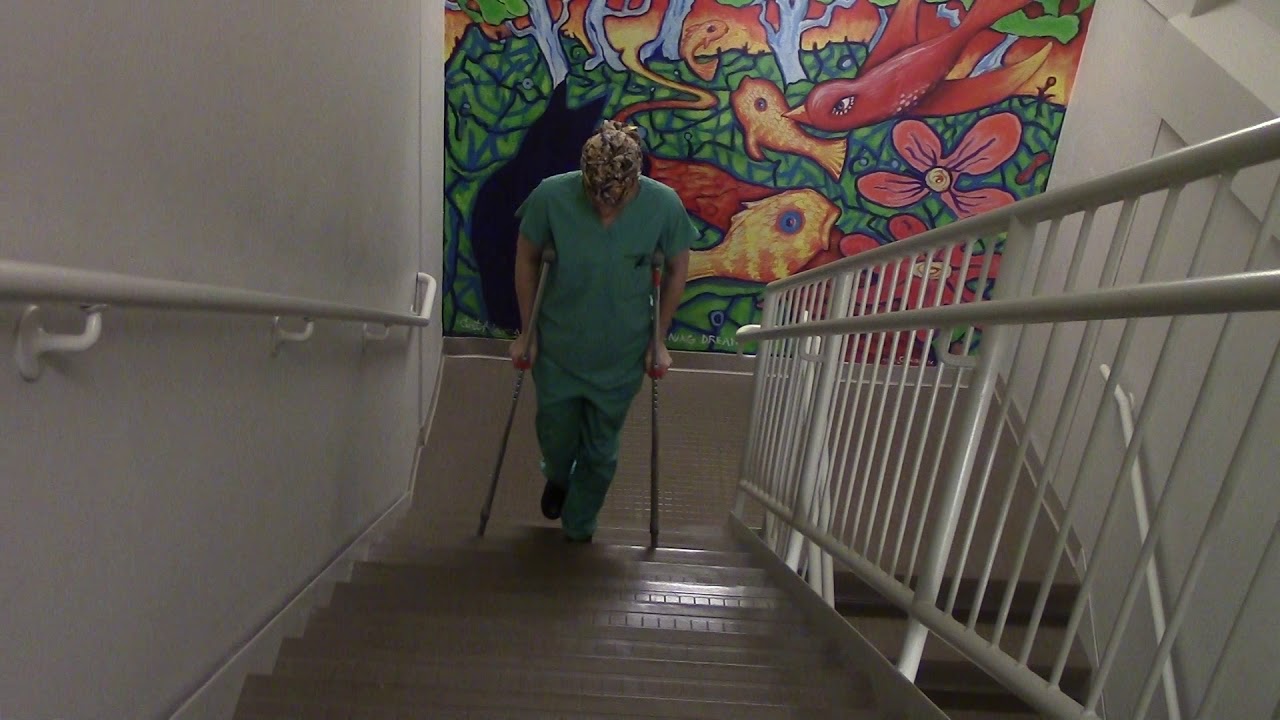
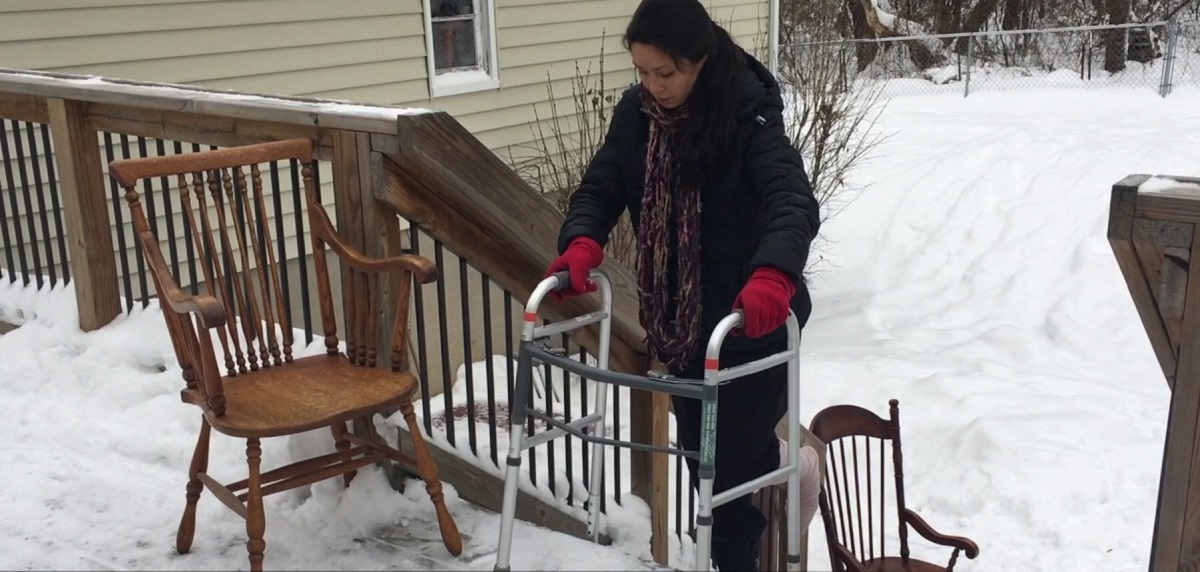
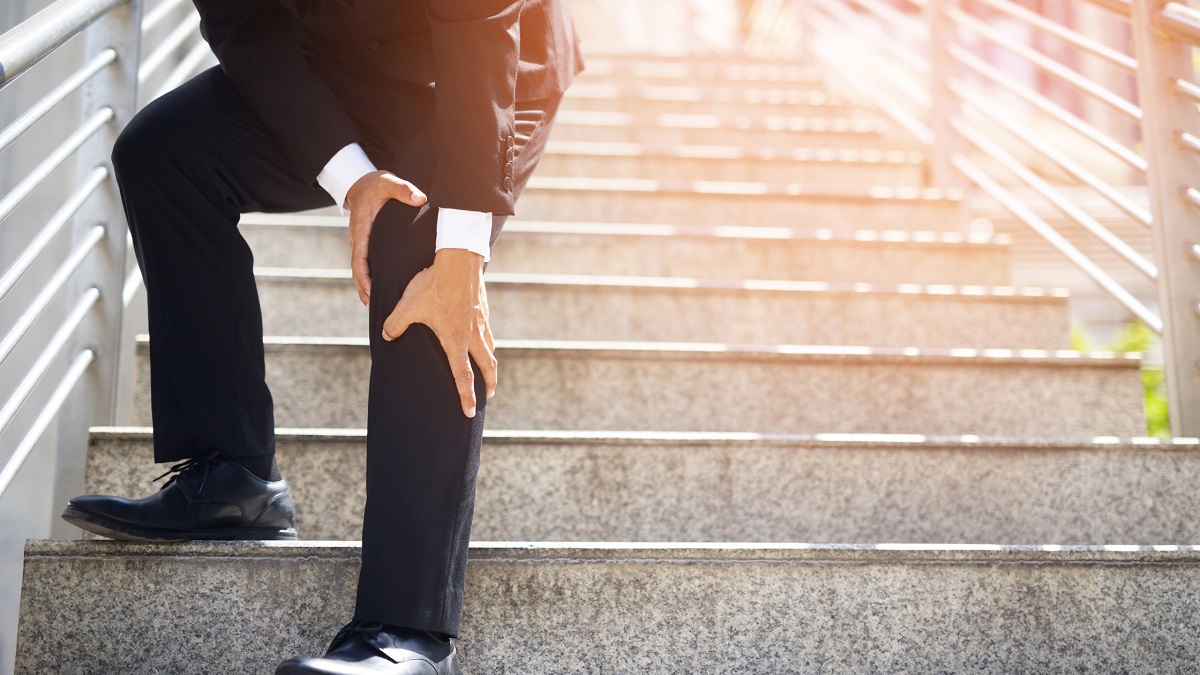
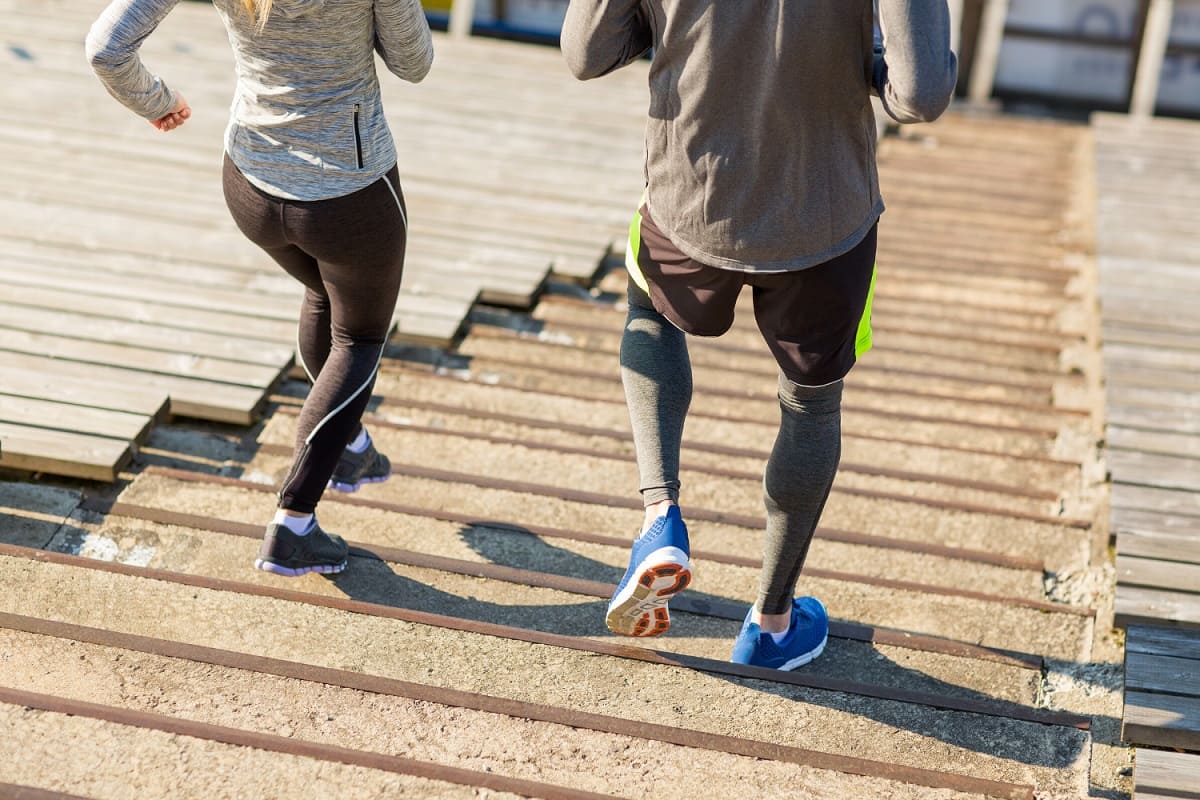



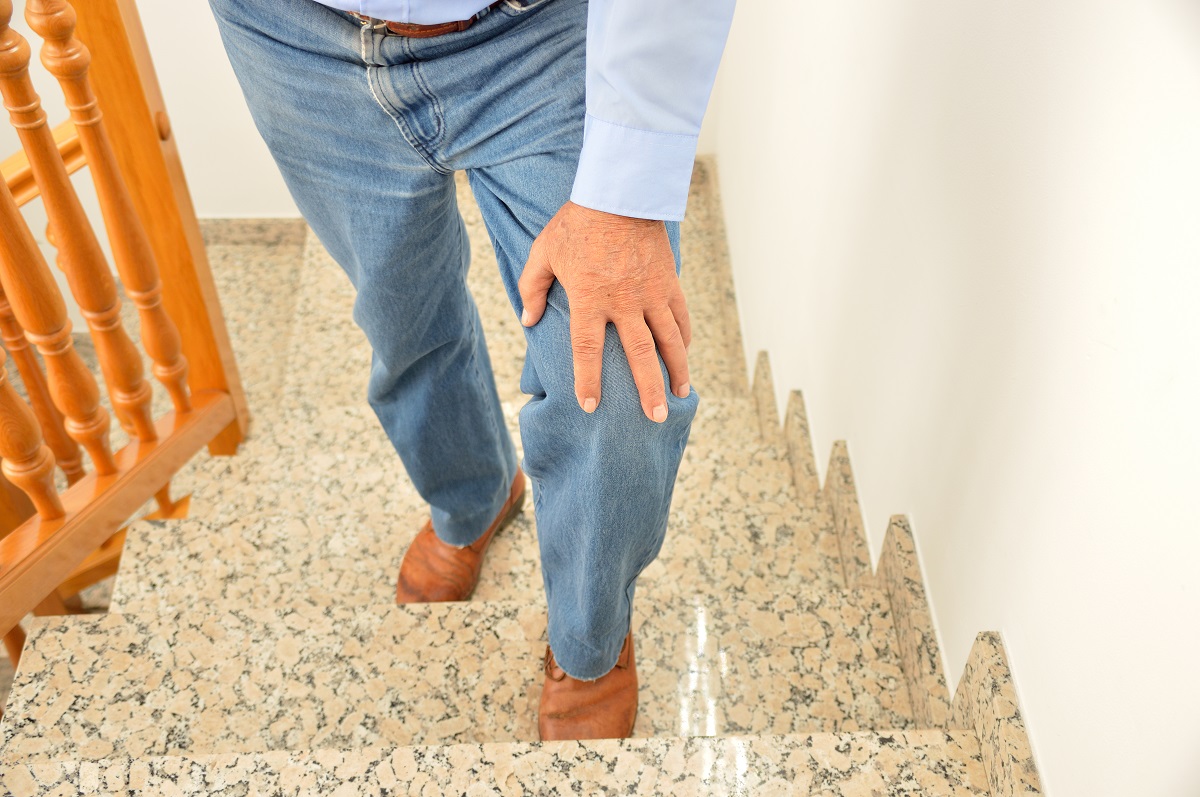


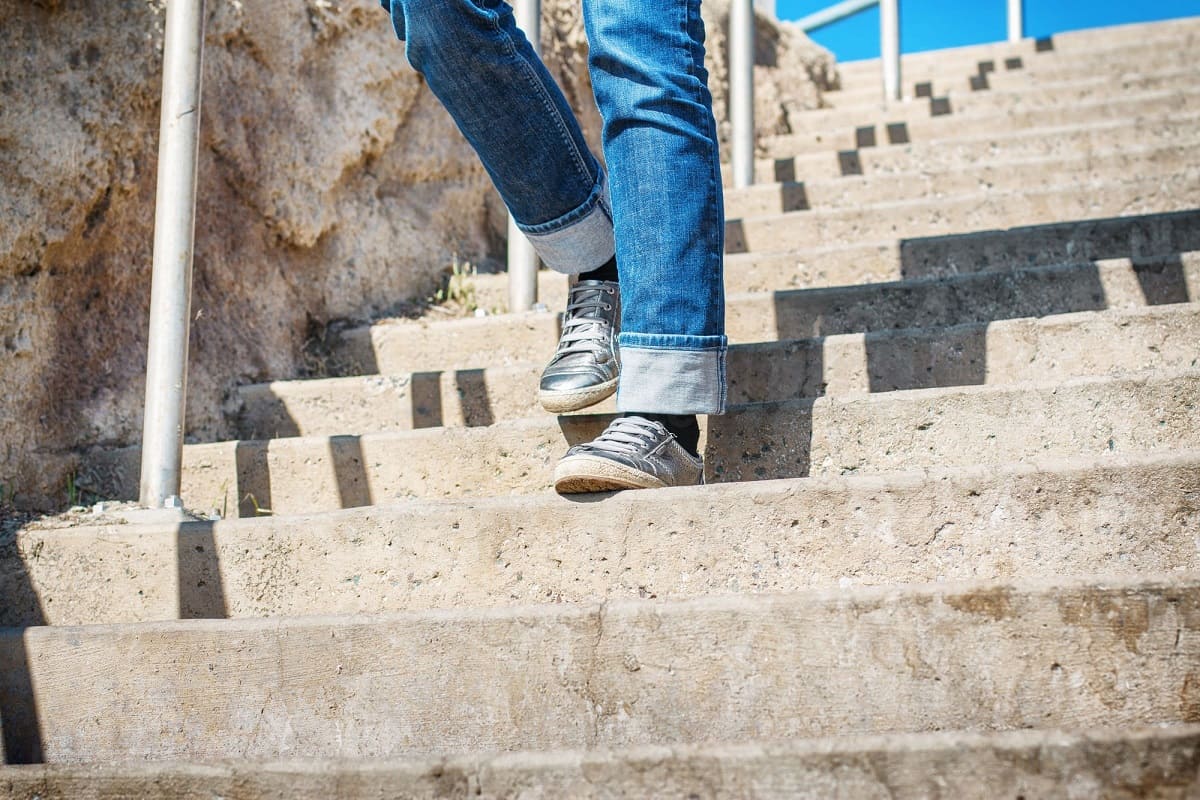
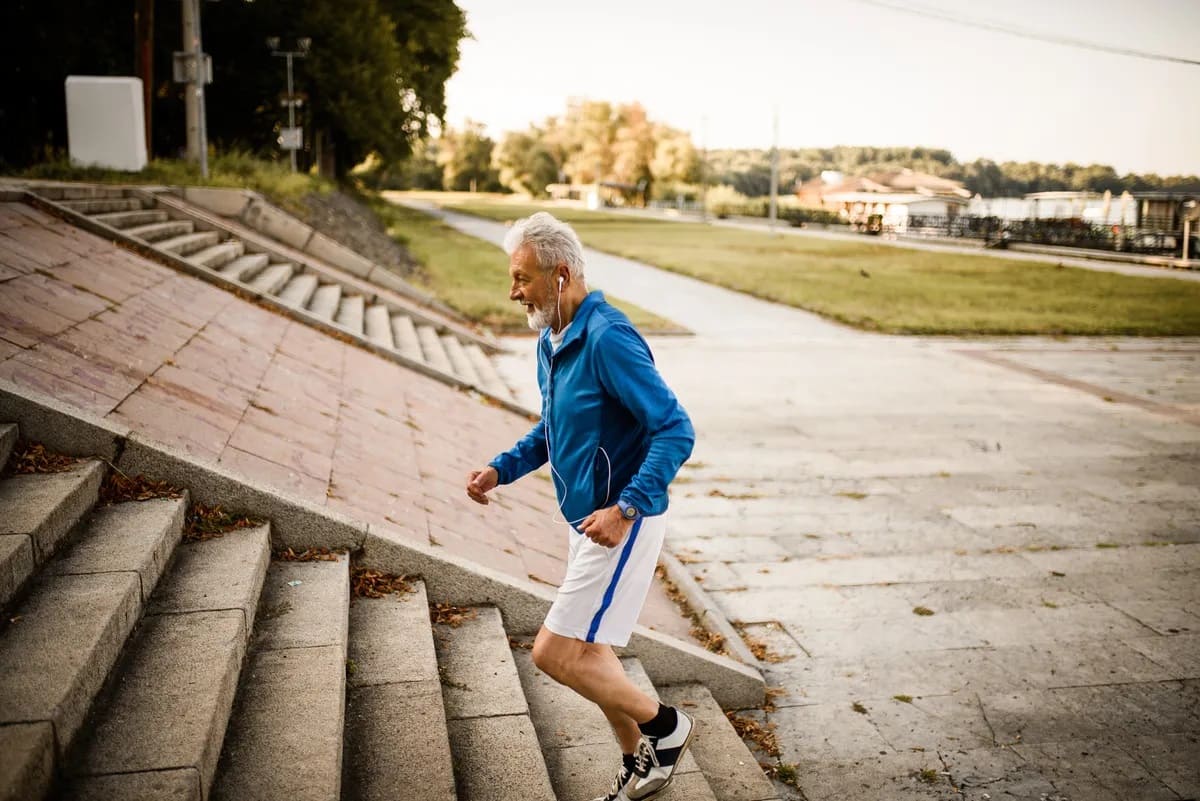
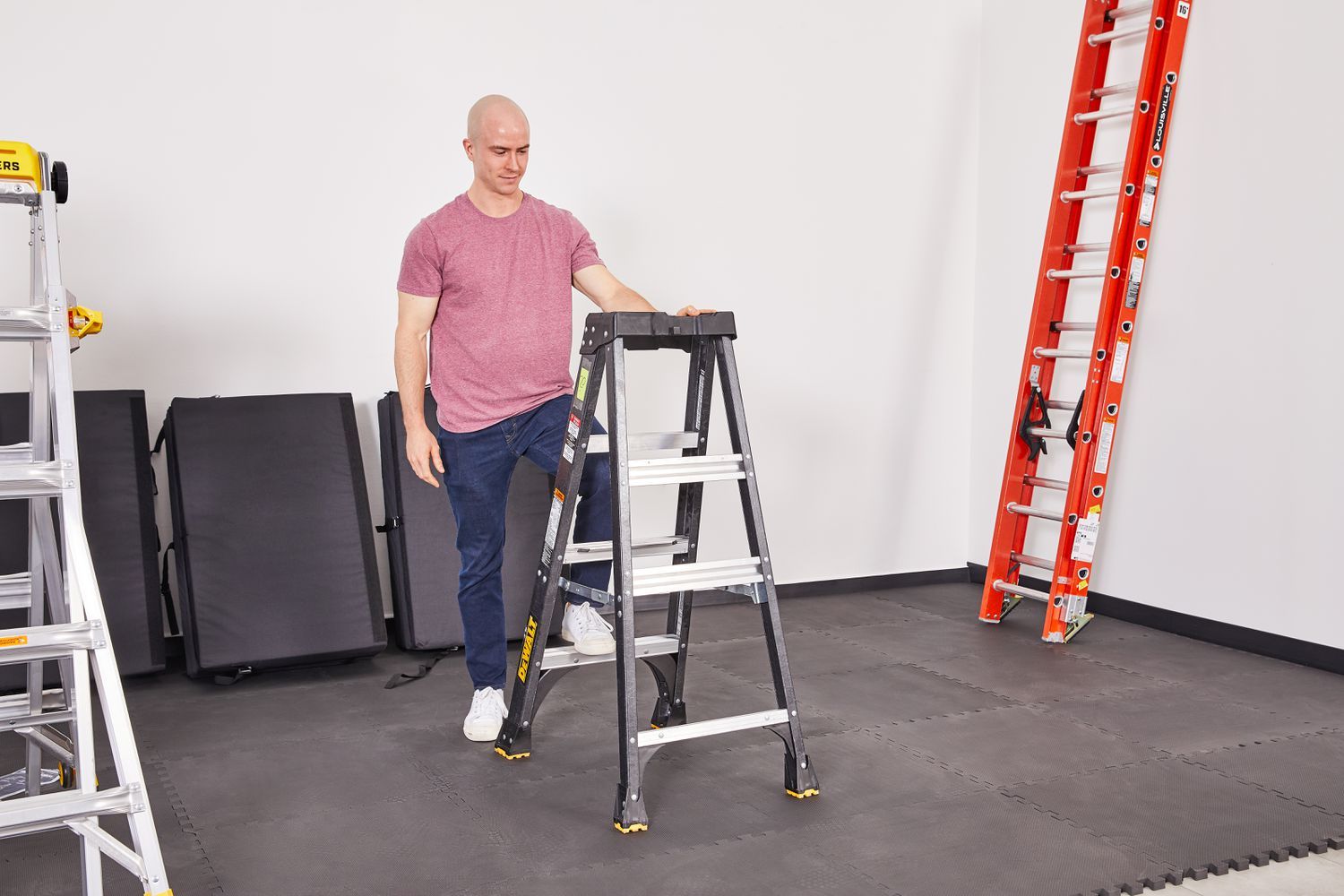

0 thoughts on “Leg Pain When Going Up Stairs”